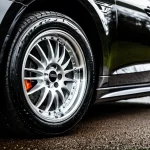Key Strategies to Enhance Backup Sensor Accuracy in City Environments
Urban driving presents unique challenges that significantly affect backup sensor accuracy. To improve sensor performance during city driving, precise calibration tailored to urban conditions is essential. Calibration techniques involve adjusting the sensor sensitivity to detect smaller, closer objects common in city environments, such as pedestrians, parked bicycles, or street signs. This ensures that the sensors provide timely alerts without excessive false alarms.
Another major influence on sensor reliability is the variety of environmental factors typical in cities. Narrow streets, high-density traffic, and reflective surfaces like glass storefronts can cause sensor confusion or blind spots. Recognizing these factors allows drivers and service technicians to adjust settings or vehicle positioning accordingly. For example, slightly repositioning the vehicle when parking can help the sensors maximize their effectiveness by providing a clearer detection path free from obstructive elements.
Additional reading : Optimize Safety: Expert Tips for Seamless Integration of Child Car Seats with Your Vehicle’s Safety Features
Finally, understanding the interaction between vehicle placement and sensor function is vital. Vehicles parked too close to walls or other cars might reduce the sensor’s ability to detect all surroundings accurately. A well-planned parking approach considering backup sensor zones helps maintain reliable detection, enhancing safety and making city driving smoother. Optimizing these strategies collectively contributes to more dependable backup sensor performance in complex urban environments.
Essential Maintenance Tips for Reliable Urban Sensor Operation
Maintaining backup sensor reliability in city vehicles hinges on diligent backup sensor maintenance. Frequent exposure to dirt, dust, and grime in urban environments can obscure sensor lenses, causing inaccurate readings or false alerts. Regular cleaning sensors using a soft, damp cloth helps ensure sensors remain clear and responsive. Avoid harsh chemicals that could damage sensor surfaces or coatings.
In parallel : Mastering Vehicle Safety: Crucial Strategies for Flawless Calibration of Collision Avoidance Systems
City driving often results in minor bumps against curbs or posts during parking, which can lead to physical damage or misalignment. Checking sensors periodically for cracks, dents, or displacement is crucial. Misaligned sensors compromise sensor performance by skewing detection angles, so professional adjustment might be necessary after such incidents.
Routine sensor testing and diagnostics form another cornerstone of dependable backup sensor maintenance. Many vehicles feature built-in sensor diagnostics accessible via the onboard interface, allowing drivers to detect diminished sensor function early. For comprehensive checks, specialized diagnostic tools used by service technicians can identify calibration issues or sensor malfunctions before they pose safety risks.
In sum, combining regular cleaning, inspection for physical damage, and proactive testing significantly enhances sensor reliability, ensuring urban vehicles perform optimally during complex city driving scenarios.
Troubleshooting Common Challenges: Urban Interference and Sensor Errors
Urban environments introduce specific sensor interference challenges that impact backup sensor accuracy during city driving. One frequent issue is interference from wireless signals emitted by other vehicles or nearby devices. Such interference can cause erroneous sensor readings or delayed alerts. Addressing this begins with identifying sources of electromagnetic disruptions and ensuring sensors are properly shielded and grounded during installation or maintenance. Advanced sensor models often include built-in filters to minimize these disturbances.
Crowded parking lots and narrow city spaces present another frequent obstacle for reliable sensor performance. In these tight urban settings, backup sensors may struggle to distinguish between multiple close objects, leading to confusion or false positives. Solutions include recalibrating sensors with urban-specific sensitivity parameters and utilizing vehicle positioning strategies to avoid overlapping detection zones.
Common sensor glitches, like phantom alerts or sudden sensor dropouts, often stem from environmental factors such as rain, reflective surfaces, or dirt buildup but can also be aggravated by compact urban spaces. Performing systematic backup sensor troubleshooting involves step-by-step diagnostic tests: starting with visual inspection for physical damage, followed by electronic diagnostics to check sensor signal integrity. In some cases, resetting the sensor system or updating its firmware resolves persistent errors.
By understanding these urban-specific issues and applying targeted troubleshooting strategies, drivers can maintain high backup sensor accuracy and improve overall safety in complex city driving conditions.
Upgrading Tech: Recommended Back-Up Sensor Improvements for Smart Navigators
Enhancing backup sensor performance in city driving often requires thoughtful backup sensor upgrades tailored to complex urban environments. Upgrading to advanced sensor models equipped with improved signal processing helps reduce false positives common in crowded city spaces. These smart sensors incorporate algorithms that better differentiate between close objects such as pedestrians and stationary obstacles, significantly boosting backup sensor accuracy.
Integrating backup sensors with advanced driver assistance systems (ADAS) and smart vehicle tech further elevates urban driving safety. Combining sensor input with cameras and radar creates a more comprehensive detection system, addressing blind spots and improving situational awareness. For example, pairing sensors with rearview cameras enables real-time visual feedback alongside proximity alerts, allowing drivers to make informed parking decisions even in tight city spots.
When selecting backup sensor upgrades, compatibility is critical. Sensors must seamlessly connect with existing vehicle electronic systems without causing interference or diagnostic errors. Many aftermarket options offer plug-and-play designs specifically made for urban vehicles, ensuring straightforward installation and reliable communication with onboard computers.
Recommended accessories complementing sensor upgrades include parking assist modules and display units that provide clearer alerts or visual cues. These enhancements optimize sensor feedback, tailoring it to the demands of city driving by enhancing both precision and usability.
In essence, investing in technologically advanced and compatible backup sensor upgrades transforms urban driving. These improvements help vehicles navigate complex cityscapes more confidently, boosting safety and sensor effectiveness in challenging environments.
Smart Driving Techniques for Urban Backup Safety
Enhancing urban driving safety relies heavily on adopting smart driving habits that complement the capabilities of backup sensors. Integrating sensor performance with active visual monitoring creates a comprehensive safety approach. Drivers should not solely rely on sensor alerts but also perform consistent shoulder checks and mirror glances. This dual strategy ensures detection of obstacles sensor might miss due to environmental interference or blind spots, especially common in city driving.
Maneuvering in busy or confined urban spaces demands precise control combined with awareness of sensor feedback. Slower backing speeds allow sensors more time to identify obstacles and provide accurate alerts, reducing collision risk. Understanding sensor detection zones helps drivers position their vehicles optimally, minimizing blind areas and maximizing obstacle recognition. For instance, inching the vehicle forward or adjusting the steering angle can expose hidden objects within sensor range.
Adapting driving habits to fully utilise backup sensor accuracy includes anticipating common urban obstacles like pedestrians, cyclists, and low-clearance barriers. Maintaining a heightened focus during reverse maneuvers in city streets and parking lots enhances reaction time to sensor warnings. Moreover, regularly updating one’s knowledge of sensor capabilities and limitations enables drivers to respond appropriately, blending technology with attentive driving for safer urban parking and navigation.

